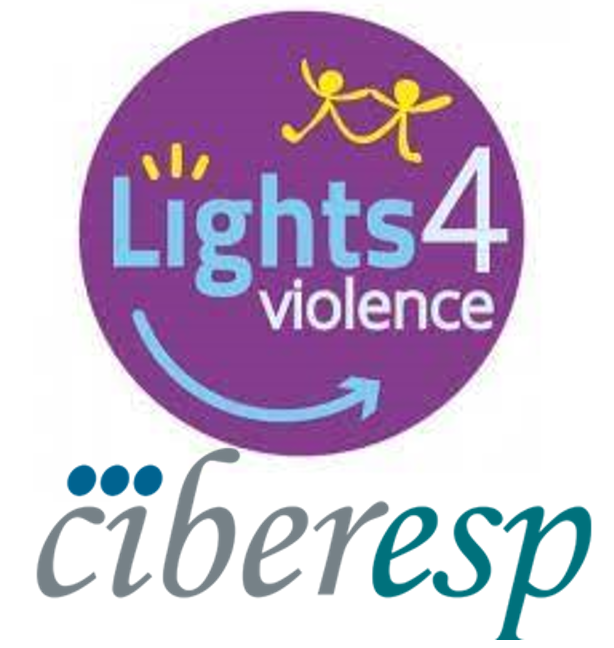1. EDITORIAL
To See Ourselves in a New Present. On the International Day for the Elimination of Violence Against Women
25 th. November has been designated by the United Nations General Assembly as the International Day for the Elimination of Violence Against Women. To raise awareness in Portugal, the team coordinator of Lights4violence, Sofia Neves, organized a Conference joining protagonists from the three main areas of action to eliminate violence against women: decision-makers, researchers and leaders of non-governmental organizations, women's rights activists and gender equality advocates, with a key role in the organization and services provision of essential support for persons discriminated and for persons who are victims of intimate violence. During the Conference these areas of action debated what is being done in Portugal in each of their domains and reflected, together, how change in violence against women could be printed in the near future. The conference was interdisciplinary recognizing the importance of cross-glancing from various scientific areas, including education, psychology, sociology, gender studies, health, among others. Dedicated to the theme of the intervention, it launched a look at gender violence in intimacy.
25 th. November was also chosen to reveal the number of femicides in Portugal in 2018 until the month of November: 24 women (preliminary data). Once again, the data challenge us to action by investing much more in the prevention of violence and in the promotion of gender equality. Media gave prominence to the day by highlighting the launch of a national campaign publicizing a helpline (with the #VamosGanharALutaContraAViolência, which means Let's Win the Fight Against Violence), femicide data and covering a very wide range of initiatives, including the Conference organized by the coordinator of the Portuguese team of Lights4violence. All these activities have a common purpose: the awareness that gender violence is a social scourge.
The very recent EIGE data and the FRA data do not let us forget that Europe and European countries still have much to do: in the EU-28, 33% of women have experienced physical and/or sexual violence since age 15; 68.9% experienced health consequences of physical and/or sexual violence since age 15; 43% experienced psychological violence by a current or former partner. 13.4% experienced physical and/or sexual violence in the past 12 months and have not told anyone. For Portugal, this indicator shows a higher proportion, standing at 17.9%. In Spain it is still higher: 18.5%. In Italy the proportion is above the European average, although it is closer to 15%. In Romania and Poland, this indicator is roughly equivalent to the European average and in the UK, it is below the EU-28 average (EIGE, 2018).
Engaged, active, and involved participation of teachers and students in Schools reveals the importance of Lights4violence, underlying the urgency of change, promoting healthy and positive relationships. Each teacher with specific training amplifies the message of change. Each of the young people is a breeder, reproducing the message to their peers and in their family and community. Each school seeks to educate for non-violence expecting attitude change and expecting that beliefs about gender are not based on stereotypes.
Until December 10th, which marks the Universal Declaration of Human Rights, a large part of the Lights for Violence Project will be fulfilled emphasizing the importance of prevention and the great wealth of observing creative ways as young people build their path, free from violence.
[Reference: EIGE (2018) Gender Equality Index 2017. Violence indicators in EU-28. Retrieved from https://eige.europa.eu/gender-equality-index/2015/domain/violence, in 24 November 2018.]
Edited by Dália Costa (ISMAI, Portugal)
Lights4Violence team at the Meeting in Rome, October 2018
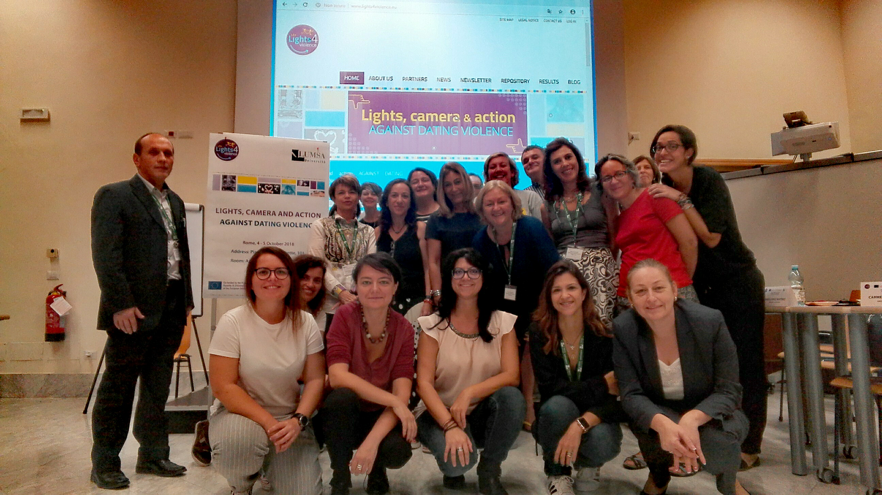
If you believe that promoting protective factors, such as trust, recognition of diversity, and mutual respect and friendshipis a way to prevent dating violence, follow us on Facebook (www.facebook.com/Lights4Violence/); Twitter (@lights4violence) and Instagram (Lights4Violence), and please visit our website www.lights4violence.euand blog http://www.lights4violence.eu/blog
2. OVERVIEW OF OUR ACTIVITIES
2.1. DISSEMINATION ACTIVITIES
2.1.1. Journals
Belén Sanz Barbero, Carmen Vives Cases and Consuelo Corradi, as members of the Lights4Violence Project, have published a paper where they aim to describe and analyze whether a relationship exists between gender equality and political responses to gender violence (GV) against women with physical and/or sexual intimate partner violence (IPV) in the European Union (EU). They analyzed a subsample of 39,269 ever-partnered women aged 18 and older from the violence against women survey (2012) of the EU Agency for Fundamental Rights. Outcome was last 12 months physical and/or sexual IPV. Multilevel Poisson regression models were used. According to the results, the current prevalence of IPV was 4.2%. Having suffered abuse by an adult before age 15 was the strongest associated factor for increasing the probability of suffering (PR: 2.9). Living in countries with higher gender equality, with anti-GV legislation prior to 2005, in countries where the state involved multiple actors in GV response and in countries with family policies included in the Anglo-Saxon, Eastern European and Southern European typologies (reference: Nordic), diminishes the women likelihood of suffering IPV. Consequently, the response to IPV in the EU requires an integral approach that accounts for the efforts of multiple sectors as well as policies that reach greater levels of gender equality in the countries.
Reference: Sanz-Barbero, B., Corradi, C., Otero-García, L., Ayala, A., & Vives-Cases, C. (2018). The effect of macrosocial policies on violence against women: a multilevel study in 28 European countries. International journal of public health, 63(8): 901-911.
------------------------------------------------------------------------------
Members of the Spanish team have published a paper analyizing the effect and impact of heat waves on the risk of IPV. Indeed, as a high number of women reports experiencing intimate partner violence (IPV), it is of utmost importance to identify possible factors that precipitate IPV and incorporate them into police protocols for evaluating IPV risk. Scientific evidence shows that environmental temperature is associated with a risk of violent behavior. They approach the topic according to an ecological, longitudinal time series study. The dependent variables are: intimate partner femicides (IPF), reports of IPV and 016 IPV telephone help line calls in the Community of Madrid from 05/01 to 09/30 in the years 2008-2016. The principal independent variable is the daily maximum temperature in Celsius (Tmax) above the heat wave threshold of 34 °C. A binomial negative regression was used for calls and reports and a Poisson regression was used for IPF. The attributable risk among those exposed (AR%) and the number of attributable cases was calculated for each variable. Results show that the risk of IPF increased three days after the heat wave, [RR(IC95%):1.40(1.00-1.97)], police reports of IPV increased one day after [RR (IC95%):1.02(1.00-1.03) and help line calls increased five days after [RR(IC95%):1.01(1.00-1.03)]. The AR% was 28.8% (IC95%: 0.3%-49.2%) for IPF, 1.7% (IC95%:0.3%-3.1%) for police reports and 1.43% (IC95:0.1%;2.8%) for help line calls. Therefore, results suggest that heat waves are associated with an increase in IPV. The effect of an increase in IPV is delayed in time, with differences according to the violence indicators analyzed.
Refenrence: Sanz-Barbero, B., Linares, C., Vives-Cases, C., González, J. L., López-Ossorio, J. J., & Díaz, J. (2018). Heat wave and the risk of intimate partner violence. Science of the Total Environment, 644: 413-419.
------------------------------------------------------------------------------
Spanish partners published a paper exploring how health professionals perceived the effect of the economic crisis and associated austerity measures on the detection of and cares for intimate partner violence (IPV) in primary care in Spain. It is a qualitative study designed using semi-structured interviews carried out with 145 health professionals in 16 primary health care centres in different regions of Spain. An inductive thematic analysis was made of the transcriptions. Three main themes were identified during data analysis: Women endure more violence during times of economic crisis; Fewer resources, fewer professionals and less time to respond to IPV; and Professionals’ motivation as a requirement to respond to IPV. Professionals perceived that economic precariousness triggered violence against women and made women more hesitant to put an end to violent relationships. They also reported that the austerity measures applied to primary health care negatively affected their ability to detect and adequately care for cases of IPV due to a heavy workload, reduced human resources, difficulties in training and the loss of resources to which women could be referred. Health professionals' motivation played a vital role in the response to IPV. The authors’ conclusions are thate institutional efforts to organize awareness programmes and training in order to improve and promote early diagnosis, care and rehabilitation of these women cannot stop during times of crisis and primary health care centres should facilitate health professionals' access to these programmes.
Reference: Otero-García, L., Briones-Vozmediano, E., Vives-Cases, C., García-Quinto, M., Sanz-Barbero, B., & Goicolea, I. (2018). A qualitative study on primary health care responses to intimate partner violence during the economic crisis in Spain. European journal of public health, 28(6): 1000-1005
------------------------------------------------------------------------------
Does intimate partner violence (IPV) against women respond to cycles? Can we predict when a woman could be at increased risk of suffering aggression? Our partners Belén Sanz Barbero and Carmen Vives Cases, with their colleagues, analyze whether there are time patterns in different intimate partner violence (IPV) indicators and obtain models that can predict the behavior of these time series. Indeed, the time series analysis of the number of daily calls to the 016 helpline, as well as the daily number of reports filed, could help to predict possible periods of risk. Indeed, results suggest the need for an increase in police and judicial resources on nonwork days. Also, the 016 telephone IPV helpline should be especially active on work days. To know more details about this study, you have to click here: https://goo.gl/ADzhJC
Reference: Sanz-Barbero, B., Linares, C., Vives-Cases, C., González, J. L., López-Ossorio, J. J., & Díaz, J. (2018). Intimate Partner Violence in Madrid: A Time Series Analysis (2008-2016). Annals of epidemiology, 28(9): 635-640
2.1.2. Conferences
On 12-14 September, Lisbon will host the congress of the Spanish Epidemiology Society (https://www.seepidemiologia.es) and the Portuguese Association of Epidemiology (www.ape.org.pt). During this congress, the Alicante and Madrid teams will present their last research on intimate partner violence. Have a look at the program: https://goo.gl/MBzsBE. The Alicante Team will present “lights4violence” project to the scientific community. They also will present results from the European Union Agency for Fundamental Rights Violence Against Women Survey, 2012 in young women (https://jech.bmj.com/content/72/7/611) and results about the effectiveness of violence prevention programs for young people and adolescents in the Spanish context. On the other hand, the Madrid Team will present their last results about the spatial and temporal distribution of IPV. These results show an association between week day, holidays and heat waves with different indicators of intimate partner violence (IPV): police IPV reports, help IPV line calls and femicides (https://goo.gl/Zqc7qo).
------------------------------------------------------------------------------
The Portuguese team presented the Lights4Violence Project in the 5th International Symposium about Fusions in Cinema, held in S. João da Madeira, last 24th november. The event was integrated in the program of the festival Roots of Portuguese Cinema.
5th International Symposium about Fusions in Cinema
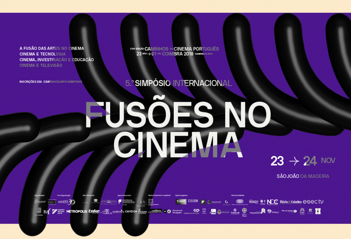
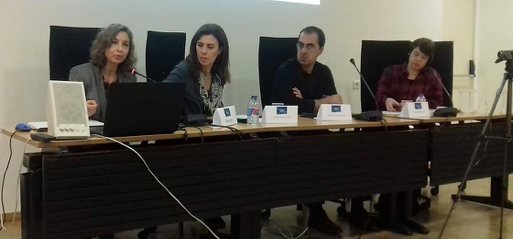
------------------------------------------------------------------------------
On December 11, 2018, Jacek Pyżalski, from our Polish partner, will participate in the Conference “The system of prophylaxis in Poland: status and recommendations for increasing the effectiveness and efficiency of planning and implementation of prophylactic programs in micro and macro scale”. His paper titles “Prevention of behavioral addictions and violence at school” and approach the problem of the school violence with a focus on teen dating violence. More in general, the conference’s topics embrass effective methods and best practices in mental health promotion, school prophylaxis and prevention of high-risk behaviors among children and youths in Poland. Data inspiring discussion come from longitudinal research carried out as part of the project implemented in Poland in years 2016-2018. The conclusions coming from them concern the legal basis of prevention, its financing, organization and administration of prophylaxis programs, examples of effective programs, as well as support for school mental health, prophylaxis and prevention by activation of the socio-cultural school environment.
2.2. COMMUNICATION ACTIVITIES
The last Sunday, september 30th, the University of Alicante’s team was invited to the event “Espai de Somnis”, organized by Fundación Don Bosco for its 30th anniversary, celebrated at Teatro Martín I Soler at Palau de les Arts I les Ciències in Valencia. MªCarmen Davó, Natalia Albaladejo and Vanesa Pérez attended on behalf of the team and made the project known the Lights4Violence project to the volunteer of this foundation, taking a further step in the dissemination of the project, so that the networks can also be extended to other groups. It was a pleasant experience.
Spanish partners at work at the “Espai de Somnis”
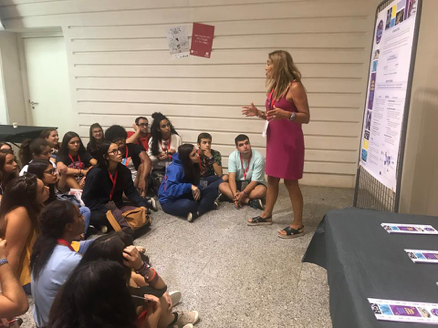
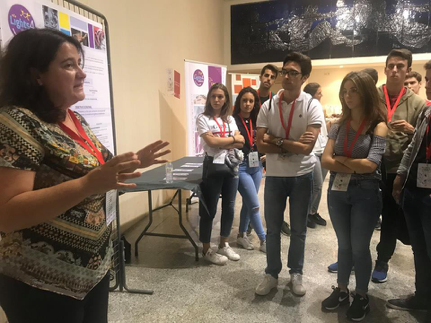
------------------------------------------------------------------------------
Sylwia Jaskulska from the Polish team took part in 29th International Congress on Creative Drama in Education organized by Contemporary Drama Association and University of Ankara (Ankara, 24-28 October 2018). During the congress she conducted workshops for teachers entitled Drama in prevention of peer exclusion in the context of cultural diversity.The aim of the workshops was to reflect on the possibility of using youth assets to prevent peer exclusion.The first part of the workshops focused on theoretical elements: the role of peer groups in the development of children and young people and the process of peer exclusion (mechanisms of exclusion, forms of exclusion, reasons for exclusion from a peer group). The aim of this part of workshops was to emphasize the importance of group for young people, understanding the mechanism and consequences of exclusion from a group, as well as exchanging thoughts and experiences in this scope. The second part included exercises with the use of drama method that depicts the mechanism of peer exclusion. The exercises that constitute a part of workshops are to bring answers to the questions concerning the mechanisms of peer exclusion, particularly in the context of culturally diversified groups: What is it like to be a new member of a group? What is it like to be a person that is different from the rest of the group? Why groups tend to exclude some members? What does the excluded person feel? How can one prevent exclusion? The third part of the workshops contained exercises that used drama methods improving personal (e.g. self-esteem, self-confidence) and group (cooperation, ability to set common goals) resources.
Drama in prevention of peer exclusion in the context of cultural diversity
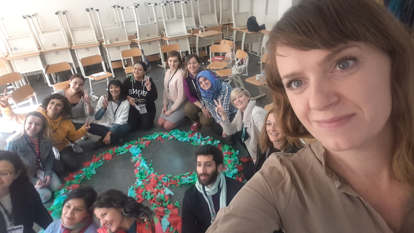
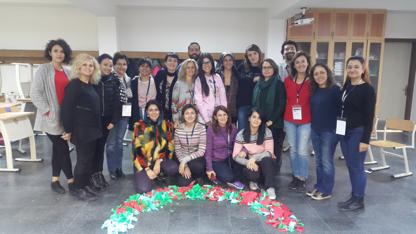
2.3. FIELDWORK ACTIVITIES
Italy, Portugal, Romania, Spain and United Kingdom have finished recently the survey of the baseline intervention group. Preliminary results show us that:
- out of a total of 659 students, 56.1% were females and the mean age was 13.7 years;
- 34.4% of the students knew some women and 9.7% some men who have experienced intimate partner violence;
- 34.0% had ever been in a dating relationship.
The prevalence of control dating violence in the whole sample was 13.8%. 5.3% have suffered physical dating violence and 3.6% suffered sexual dating violence by their actual or former boyfriend/girlfriend.
Bullying and cyberbullying were more prevalence, with a percentage of 28.2% and 18.7% respectively, than physical or sexual dating violence.
We found differences between boys and girls in the mean scores of the scales. For example, boys showed a higher mean score of violent behavior than girls, measured by the Maudsley Violence Questionnaire (MVQ) (18.3 vs. 11.1), greater levels of Ambivalent Sexism (59.0 vs. 52.1) and self-esteem (29.7 vs. 27.9). A higher mother’s level of schooling was associated with higher social support (Child and Adolescent Social Support Scale, CASSS), assertiveness skills (Assertive Interpersonal Schema Questionnaire, AISQ), problem-solving skills (Social Problem Solving Inventory–Revised, SPSI-R) and empathy (Personal Strengths Inventory-2, PSI-2); as well as reduced violent (MVQ) and aggressive behaviors (Aggression Questionnaire Refined, AQR). The physical or sexual abuse in childhood was associated with lower social support, assertiveness skills, self-esteem, and happiness (Subjective Happiness Scale) and with higher violent and aggressive behavior.
Students fulfilling the questionnaire
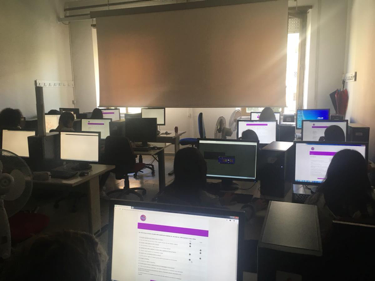
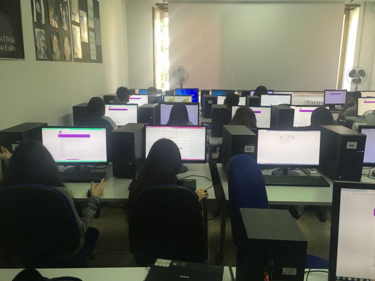
------------------------------------------------------------------------------
The use of rating scales is frequent in most psychological, sociological and epidemiological studies nowadays. The Lights4Violence study is a clear example of this. Rating scales provide information on non-directly observable concepts, known as constructs, such as symptoms (for example, pain, fatigue), mental and cognitive status (intelligence, depression), feelings (anger, euphoria, attitudes to dating violence), well-being and quality of life. The development of rating scales requires systematic and structured procedures to ensure its quality, through the analysis of several attributes. This process tries to answer several questions, for example: is the rating scale suitable and acceptable for the users? If we apply the rating scale in two separate moments to the same individuals, do we obtain similar results? Are the items that compose the scale covering all the relevant aspects of the construct? Are the items that compose the rating scale aimed at assessing the same construct? Are they measuring the construct in the same way? These two last questions are addressed to measure what in Psychometrics is known as internal consistency, and the Cronbach’s alpha is the one of the most adequate indices to analyze it. Cronbach’s alpha, first proposed by Lee Cronbach in 1951, is defined as the average correlation of a set of items. The values of Cronbach’s alpha range between 0 and 1, with higher values indicating higher internal consistency. It has been proposed that values equal or higher than 0.70 are indicative of good internal consistency, that is, that items are strongly associated and that are measuring the same construct. However, values over 0.95 suggest redundancy, thus, some items are not necessary for the rating scale and could be removed.
So, how are we using the Cronbach’s alpha in our Lights4Violence study? From the results of the pilot study, we can take the Interpersonal Reactivity Index (IRI) as an example. We obtained the following Cronbach’s alphas in one of our pilot studies:

As we can see, the Cronbach’s alpha is 0.781 for Personal distress, indicating an adequate internal consistency of this subscale. However, it is 0.513 for Perspective taking, 0.496 for Fantasy, and -0.103 for Empathetic concerns. What does it mean? It means that some of the items of these subscales are not consistent, and that probably, they are not measuring the same construct (perspective, or fantasy, or empathy). A low Cronbach’s alpha does not necessarily mean that those items should be deleted. We have then to analyze those items individually and see what has happened: is the wording or the rating score correct? Are items correctly translated? Are they understandable? Are they scored in a different way than the other items? Are they associated to other items in other subscales? If we, for example, take an individual item from one of the IRI subscales with low Cronbach’s alpha, item 15: “If I'm sure I'm right about something, I don't waste much time listening to other people's arguments”. Is this item properly understood, or is it measuring another construct? It is a long item, with many parts, which might cause that people with similar perspective level (the construct) might answer it in different ways.
When looking at the internal consistency results from the pilot study of Lights4Violence, we were able to identify items that, in some countries, had translation problems, or were scored in a reserved way. In other cases, such as the Empathic Concerns subscale, items were very long, written in a negative way, which might have led teenagers to have difficulties to understand and thus an inconsistent way of answering these items in most countries.
The subsequent action plan is depending on the answers to these questions and on the results of the full psychometric analysis of data from all intervention sites. In case of low internal consistency, some strategies can be taken: to correct the translation; to correct the rating scheme by reserving it; to delete one or two problematic items (with low correlations with the rest of the item); to use the total score instead of the subscale scores; to delete a scale in a certain or all countries. All strategies have advantages and inconvenient, and decision should be properly justified. It is important to resolve these problems at the pilot testing phase. A scale with good internal consistency has less error associated to it, which will impact the following statistical analyses.
------------------------------------------------------------------------------
Throughout the project’s network, the training activities with teachers have been completed during Autumn 2018. They involved groups varying between 8 and 15 teachers and mainly dealth with 1) an overview on teen dating violence, 2) a brief explanation of the theoretical foundations of the program, and 3) a full immersion in the practical part of the project, thus handing the exercises to be provided to the students.
Feedback and responses are quite similar in the different countries. For example, in the Polish group there were not only teachers but also school psychologists, prevention specialists, etc. and it implied a good level of engagement as well as a dialogue between different perspectives on the project content. Additionally, analyzing directly all the exercises with the material was very effective as participants expressed many specific questions and ideas. In Portugal, as well, the training seminar with teachers was very productive. They enjoyed very much sharing the contents and discussing the core topics of the Project Lights4Violence. Their participation was active, contributing to the group reflection on the subject of preventing and combating dating violence in schools. In the end it was even possible to record a short video, where teachers recreated a violent situation and its resolution. The feedback was positive, with gains to the work that is being developed with students. In Italy the teachers’ commitment was more gradual. In fact, at the beginning, teachers were not so much involved, felt not interested and did not completely understand the sense of the project. After the second meeting, however, they became aware of the importance of the topic and of the urgency of working with students on dating violence. They appreciated the activities and were keen on testing them directly before we could present them to the students. In fact, during the current training activities with students, teachers welcome us very warmly. This is proving to be a valuable cooperation between university and high school teachers.
3. RELEVANT NEWS
“That’s Not Cool”, Futures Without Violence’s teen dating violence prevention program, is very proud to unveil its newest digital tool: “Respect Effect”. It is a new mobile application that supports its users to learn and practice healthy relationship skills while earning points for completing fun challenges with their friends. “Respect Effect” was developed in partnership with teens, and focuses on developing and building the skills young people need to keep themselves safe, to promote positivity and respect (online and off!), and to create and sustain healthy relationships. See the video presentation at https://youtu.be/oQV1EHMBGEEand explore the website at https://thatsnotcool.com/respect-app/.
“Respect Effect” App

------------------------------------------------------------------------------
In Australia, a new Federal Government campaign aimed at preventing violence against women and children will target the "boys being boys" attitude that still permeates society at a grassroots level. More info at: https://www.abc.net.au/news/2018-10-03/prevention-campaign-for-violence-against-women-to-launch/10330696.
------------------------------------------------------------------------------
Saturday, 20th of October, the fourth edition of the ‘’Together for Women’s Safety’’ March took placed in Bucharest. The march was organized by the Network for Preventing and Combating Violence Against Women (VIF Network) as a sign of solidarity with surviving women of violence and to maintain the necessary public pressure to respect the rights of women and girls. More than 1,000 participants crossed the route University Square - Roman Square - Victoria Square chanting slogans against violence and solidarity with women who have passed or are going through violence The march brought together both representatives of non-governmental organizations active in the field of preventing and combating violence against women, as well as representatives of embassies in Romania (Sweden, Great Britain, France ) as well as people who want to send a message of zero tolerance to domestic violence. This participation is in line with the United Nations campaign „UNiTE to End Violence Against Women”, also known as the Orange campaign, that aims to raise public awareness and increase political will and resources for preventing and ending all forms of violence against women and girls in our countries and worldwide. Through this action, the VIF Network aims to draw the attention of the authorities to the sub-financing of services for victims of domestic and sexual violence, the lack of shelters in several counties, the need to urgently introduce the aggressor surveillance system using electronic bracelets and the development of programs education, counseling and therapy for aggressors in each county. Police, Justice and the medical system must be real support facilities for victims. Institutional representatives should treat victims with dignity and professionalism to encourage them to trust their complaints and to report aggression. Authorities should treat violence against women with the utmost responsibility and include notions about gender equality in education and about preventing and combating violence against women.
DATA SHOW THAT:
• In Romania, 1 out of 4 women were physically or sexually aggressed by their partner or former partner (FRA study - Fundamental Rights Agency, 2014)
• There are over 20,000 complaints of harassment or other violence per year among family members (IGPR data, 2017)
• 55% of Romanians consider rape to be justifiable in certain situations (Eurobarometer 449, 2016)
• Every week there is a case where a woman is raped in the family and every 2 days there is a case where a minor is raped or sexually assaulted in the family (VIF Network Study, 2017).
For members of the VIF Network, the interim protection order issued by the police immediately following the finding of the deed, the financing of shelters and services for victims and the implementation of the Istanbul Convention, have been the objectives of numerous advocacy efforts. Through the public pressure generated by the match, the organizers want to speed up the institutional process of adopting measures to protect women and punish aggressors. Any action of public condemnation of violence can help to change the mentality of the victim's blame and to combat the reluctance of those around him or the authorities to intervene when a woman is aggressed by her partner.
------------------------------------------------------------------------------
The Congolese gynaecologist, Denis Mukwege, who has treated thousands of rape victims, and Nadia Murad, the Iraqi Yazidi, who was sold into sex slavery by Isis, have been jointly awarded the 2018 Nobel peace prize. The joint award comes a decade since the UN security council adopted Resolution 1820 (2008), which determined that the use of sexual violence as a weapon of war and armed conflict constitutes both a war crime and a threat to international peace and security. You can watch the announcement, which follows imminently, live here:https://www.youtube.com/watch?time_continue=1&v=C_GCp8z3St8
Denis Mukwege and Nadia Murad


Source: The official Twitter feed of the Nobel Prize
------------------------------------------------------------------------------
In October, the fourth edition of the “Together for Women’s Safety’” march took placed in Bucharest. The march was organized by the Network for Preventing and Combating Violence Against Women (VIF Network) as a sign of solidarity with surviving women of violence and to maintain the necessary public pressure to respect the rights of women and girls. More info at: https://violentaimpotrivafemeilor.ro/peste-1-000-de-persoane-au-participat-la-marsul-impreuna-pentru-siguranta-femeilor-2018
------------------------------------------------------------------------------
In Spain, in 2018, only 6 of the 29 intimate femicides had reported their aggressor (21%). Since data are available, the highest percentage of complaints was reached in 2016, when the 36% femicides had reported their aggressor. Fear, lack of confidence in the system or the non-perception of seriousness are the reasons most frequently declared by women exposed to the intimate partner violence (IPV) that do not report their aggressors. With the aim of increasing access and protection to IPV resources, one of the measures listed in the State Pact against Gender Violence recently approved by the Spanish government (www.violenciagenero.igualdad.mpr.gob.es/pactoEstado/home.htm) includes an extension regarding the accreditation of situations of gender violence, beyond a sentence or judicial resolution. The measure will allow access to resources against violence to women who have not previously filed a complaint. This can be a very positive measure for women in the moments prior to the complaint, as well as to protect those who decide not to report their aggressor. This requires that that resources be available, which is not always a reality nowadays. The Plenary session of the State Observatory for Violence Againts Women in Spain is held with representatives of the Autonomous Communities, local entities, ministries and Civil Society in the framework of the #StatePact against #GenderViolence: https://goo.gl/FxtzWw. In the meanwhile, a campaign to raise awareness that recognizing machismo is the first step towards equality was launched in Cantambria. See the video on https://goo.gl/CPVA4wand look for more info about the campaign by reading: https://goo.gl/8km6NR. Moreover, the Spanish Government delegation for gender violence launched a short campaign Follow it on the Twitter account: https://goo.gl/eWxxKg. The Spanish Minister of the Interior presented the virtual reality campaign "Do not look elsewhere", as well. See the videos at https://youtu.be/shEzBvMtlpk. More info at: https://goo.gl/wQazGn. The Barcelona City Council launched a new online space and campaign in order to measure and face with the machismo and you can have a look at its website: https://goo.gl/cNpfh5.
Intimate partner violence (IPV) is increasingly appearing at earlier ages. In 9 of the 14 areas included in the WHO Multi-Country Study on Women’s Health and Domestic Violence against Women, current physical and/or sexual IPV in the last 12 months among 15 to 24-year-old ever-partnered women was over 30%, with higher prevalence rates than those registered among women aged 25 years and older in most of the studied countries. According to European Union Agency for Fundamental Rights (FRA), out of all women in an intimate partner relationship, 22 % have experienced physical and/or sexual violence since the age of 15. Tackling IPV against youth is a public health priority that must be fullfilled with youth-friendly services and responses. According to the World Health Organization, youth-friendly health services should be accessible, acceptable, equitable, appropiate and effective for different youth population groups in order to be youth-friendly. In relation to IPV-related services, there is a need of youth specific IPV-related services, with professionals and activities appropiate for all youth and not only a few sub-groups and with effective responses to their needs. WHO-defined dimensions of quality health services to adolescents may be key to re-orient IPV-related services.
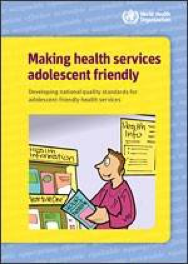
------------------------------------------------------------------------------
Sexting is the exchange of sexually explicit or provocative content (text messages, photos, and videos) via smartphone, Internet, or social networks. Recent evidence enlightened its relationships with several risk and aggressive behaviours. One of the most relevant surveys on sexting (The National Campaign & CosmoGirl.com, 2008) showed that 20% of adolescents and 33% of young adults have sent or posted nude or semi-nude sexts of themselves.
Individuals who are high and moderate users of sexting (vs. low) engaged in more victimization, and more perpetration of dating violence, including online dating violence. Moreover, high users of sexting (vs. moderate and low) showed riskier sexting behaviours (i.e., sexting during substance use, being forced to sext both by partner and friends, and sharing sexts with strangers). To know more about this study, you have to click here: http://www.psicothema.com/PDF/4303.pdf
According to the Eurispes research “Sex, eroticism and feelings: young people outside the box” that was carried out with Italian youths 18-30 years aged, 6 out of 10 make sexting (and 35.6% of them use it “only for joking”), 7 out of 10 use pornography and 6 out of 10 have had at least one night's history. Furthermore, young Italians have less sex than their peers of twenty years ago. In fact, over the past 15 years the frequency of relationships in Italian couples has fallen by 10%, and the decline is even more evident among the under30. Moreover, the percentage of young people who claim that sex and feelings do not coincide reach the 5.9%. Some believe it is better to experiment with different and/or less demanding relationships: for example, 55.1% had at least one “bed friend”. However, only 20.7% consider an open-ended relationship satisfactory. Those who have instead taken the couple commitment, that is, married young people, look elsewhere: 44% have casual sex outside the couple. The fantasies are not lacking: more than half of the interviewees revealed to be intrigued by the practices of bondage, discipline, sadism and masochism. For the majority, however, they are just fantasies, as 72.3% of them admitted they had never tried. The use of sex toys is more customary: over 4 out of 10 respondents have used them down (18% for both self-eroticism and to play with the partner, 14.4% only with the partner, and 9.6% only for autoeroticism). Worryingly, awareness about contraception and, more in general, a conscious approach to sexuality is still weak: just 39.9% always use contraceptives, and still 23.8% never use them or rarely. [Source: https://goo.gl/WR4nU3]
4. FORTHCOMING
Call for APA 2019 Division Programs, APA 2019 Convention,American Psychological Association.Deadline: Monday, December 3, 2018 @ 5:00 pm ET.
Poster Proposals, 2019 International Conference on Sexual Assault, Intimate Partner Violence, and Increasing Access, End Violence Against Women International.Deadline: Friday, December 21, 2018.
Call for Proposals, The 4th World Conference of Women's Shelters, The Garden of Hope Foundation, in partnership with Global Network of Women's Shelters.Deadline: January 7, 2019.
